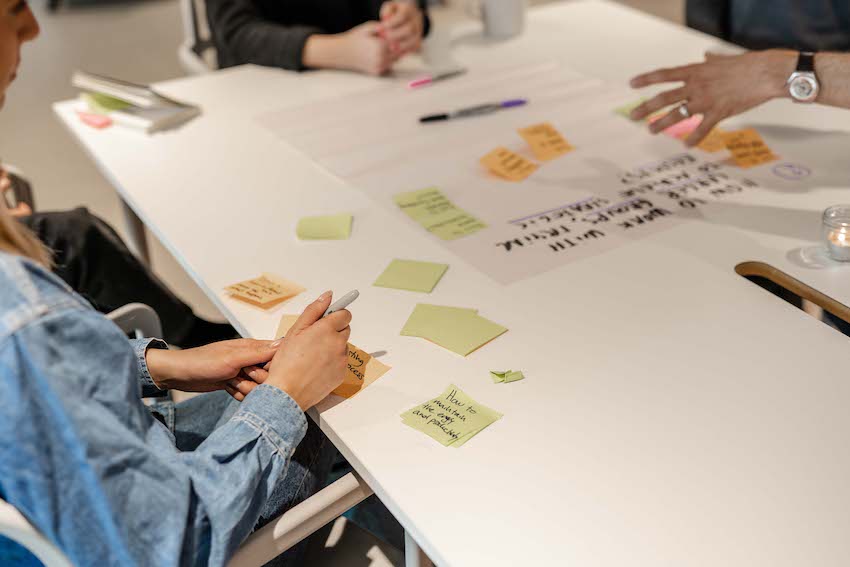Agile ways of working refers to a flexible, iterative approach to project management and team collaboration, optimised for responsiveness and adaptability in rapidly changing environments. Rooted in principles of transparency, continuous improvement, and customer-centricity, agile methodologies focus on delivering value through small, manageable increments. This approach empowers working professionals to efficiently tackle complex tasks, adapt to evolving requirements, and foster a culture of open communication and collective problem-solving.
Agile methodologies can be applied in a wide range of contexts, particularly in environments where flexibility, speed, and customer alignment are crucial.
Whether you’re navigating the world of startups or steering the ship in a corporate setting, the ability to drive ambitious initiatives, projects or work streams forward is a must. Companies that have embraced Agile are ones that can resist competition and ride the wave of changing technologies, as well as any unexpected shifts in the market.
So, what’s the goal when it comes to adopting Agile? We believe there are two primary goals:
- to help organisations and teams work with nimbleness and speed to reduce the cost of innovation and change
- be customer-obsessed and produce high-quality business outcomes while reducing inefficiencies
Thinking of adopting Agile? Then you’ll need to make note of the following insights:
- Agile is often misunderstood as anarchy, but it's not
- It’s not a one-size-fits-all approach
- There are conditions where it will be most effective and easy to implement
- Agile bridges the gap between planning and action, allowing you to conquer complexity and make significant strides on your most demanding projects
- For the most successful introductions of agile, start small and let the word spread
- The continuous innovation process must become a culture so that it is always ready for the challenges and changes that exist
Agile enters a framework not as a massive corporate overhaul, but as a personal toolkit. Think of it as a set of skills, mindsets, and techniques to help you decipher complexity, bring clarity to chaos, and most importantly, move the needle on your most demanding projects.
When it comes to making the right decisions on which tools suit your needs best, we believe in visual management tools. Making work visible creates benefits that are beneficial for every single team member. It provides transparency to projects by helping teams to visualise the flow of work. It can also give a tangible sense of progress and alerts to possible obstacles faced along the way.
Want to be more agile? Like pizza? Then you’ll love this Kanban Pizza Game from our Toolbox.
For the team itself, adopting Agile can encourage effective traits that are crucial to progressing forward as a team:
- No-blame culture
- Transparency – clear goals, roles and tasks
- Everyone’s voice is heard in equal measures
- Skillful subject matter experts
- Psychological safety
- Conflict resolution
Adopting Agile isn’t just about surviving; it’s about thriving in a world of ever-shifting technology, fierce competition, and evolving consumer needs. It empowers you to adapt, pivot, and confidently confront whatever challenges come your way.
That said, while the adoption of Agile can bring substantial long-term benefits, the initial challenges and costs can be significant. Organisations must weigh these factors and plan their transition carefully to ensure a successful adoption of Agile methodologies. To provide a balanced outlook, here are just a few:
Cultural shift
Agile can require a significant shift in both mindset and culture. Moving from a traditional, hierarchical structure to a more collaborative, flexible approach can be challenging, especially in well-established organisations with deeply ingrained practices.
Resistance to change
Employees and management may resist the changes required by Agile methodologies. This resistance often stems from discomfort with uncertainty, fear of losing control, or a lack of understanding of Agile principles.
Tools and infrastructure investment
New tools for project management, communication, and collaboration may be required, which can entail both financial and time investments.
Consultation and external support
Reliance on external consultants or Agile coaches to guide the transition in the beginning can be efficient for time purposes, but they also add to the cost of adopting Agile.
Using what you already have
As for a complete corporate Agile transformation – it doesn’t have to be an overhaul. Start with what’s within your “circle of control” by embracing the Agile mindset, incorporating Agile methodologies, and leveraging Agile tools on the initiatives or projects you’re already working on. Soon, you’ll be equipped to tackle the obstacles that stand in your way with the confidence of a seasoned pro.
The bottom line? Embrace the Agile approach, and become the professional who thrives in today’s fast-paced business environment.
Check out our blog about Agile Coach Andra Grants, a Hyper Island intern helping IKEA become more agile.
Find out everything you need to know about Hyper Island’s Agile Ways of Working course.


